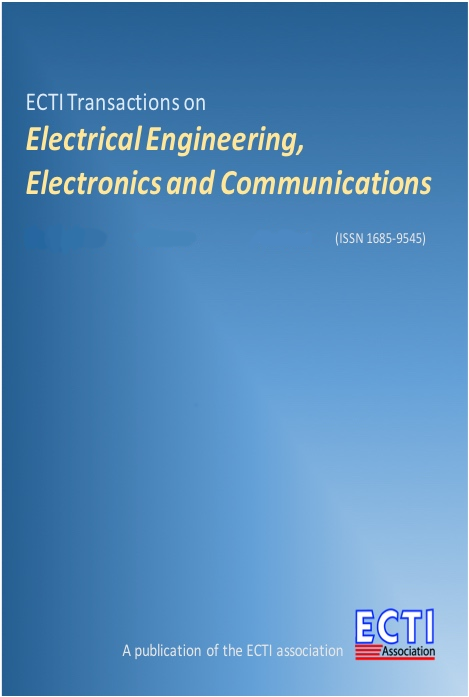Evaluation and Improvement of Ventilation System Inside Low-Cost Automation Line to Reduce Particle Contamination
Main Article Content
Abstract
Low-Cost Automation (LCA) line, a group of machines to manufacture hard disk drive’s components located inside a clean room of factory, confronted with a problem of particle contamination caused by improper ventilation system. This article aims to evaluate airflow and proposes solutions to improve the ventilation system of LCA line based on Computational Fluid Dynamics (CFD). By using actual operating conditions collected at the factory and Fluent CFD software, the simulation showed that airflow patterns in such areas were substandard. For example, the large areas of vortex with the air velocities were lower than 0.2 m/s in critical areas: Fan Filter Units’ conveyor and Work Area. The low velocity of the airflow may cause the particle contamination and leads to the low-quality products. To reduce the particle contamination, we suggested novel solutions to the contamination problem. The CFD results revealed that our suggestions by increasing the momentum source (Sm) and/or redesign the LCA’s model by extending its height of cover where the increasing of Sm represented the increment of air velocity released from sources to the optimal values exhibited the decreasing of the vortex areas and also improved the air velocities in the critical areas to meet the factory’s standard.
Article Details
This journal provides immediate open access to its content on the principle that making research freely available to the public supports a greater global exchange of knowledge.
- Creative Commons Copyright License
The journal allows readers to download and share all published articles as long as they properly cite such articles; however, they cannot change them or use them commercially. This is classified as CC BY-NC-ND for the creative commons license.
- Retention of Copyright and Publishing Rights
The journal allows the authors of the published articles to hold copyrights and publishing rights without restrictions.
References
[2] ISO No. 14644-1, Cleanrooms and associated controlled environments-Part 1: Classification of Air Cleanliness, 1999.
[3] N. Jai-Ngam, K. Tangchaichit, “Simulation of airflow inside a computer hard disk drive to develop an impinging air jet particle detachment system for cleaning head stack assemblies,” IEEE Trans. on Magn., vol. 54, no. 6, Article 7401808, 2018.
[4] JJJ. Hwang, J.J.J., Chou, K., Yang, C.M., Lin, J., et al. “Innovative approach to identify location of AMC source in cleanroom by inverse computational fluid dynamics modeling,” in Proc. 23rd Annual SEMI Advanced Manufacturing Conference (ASMC), Saratoga Springs, New York, USA, 15-17 May 2012.
[5] J. Fuliang, Z. Shuai, Y. Zengguang, et al., “The optimization of forced ventilation parameters on blind roadway based on Fluent numerical simulation,” in Proc. 10th International Symposium on Computational Intelligence and Design (ISCID), Hangzhou, China, 9-10 December 2017.
[6] D. Xiang, Q. Yang, Q. Huang, et al. “Numerical simulaton on flow characteristics of PM2.5 in the indoor environment,” in Proc. International Conference on Fluid Power and Mechatronics (FPM), Harbin, China, 5-7 August 2015.
[7] P. Fang, T. Liu, K. Liu, et al. “A simulation model to calculate temperature distribution of an air-conditioned room,” In Proc. 8th International Conference on Intelligent Human-Machine Systems and Cybernetics (IHMSC), Hangzhou, China, 27-28 August 2016.
[8] W. Zhiyuan, L. Bo, H. Fali, et al. “Numerical simulation of smoke particle motion,” In Proc. International Conference on Advanced Mechatronic Systems (ICAMechS), Xiamen, China, 6-9 December 2017.
[9] H. Liu, S. Mao, M. Li, et al. “3D simulation for dynamics of airflow and dust control in a laneway of coal mine,” In Proc. of 24th International Conference on Geoinformatics, Galway, Ireland, 14-20 August 2016.
[10] S. Sadrizadeh, S. Holmberg, “Effect of a portable ultra-clean exponential airflow unit on the particle distribution in an operating room,” Particuology, vol. 18, pp. 170-178, 2015.
[11] K.C. Noh, H.S. Kim, et al. “Study on contamination control in a minienvironment inside clean room for yield enhancement based on particle concentration measurement and airflow CFD simulation,” Build. Environ., vol. 45, pp. 825-831, 2010.
[12] J. Thongsri, and M. Pimsarn, P. “Optimum airflow to reduce particle contamination inside welding automation machine of hard disk drive production line,” Int. J. Precis. Eng. Manu., vol. 16, no. 3, pp. 509-515, 2015.
[13] J. Thongsri, “A problem of particulate contamination in an automated assembly machine successfully solved by CFD and simple experiment,” Math. Prob. Eng., vol. 2017, Article 6859852, 9 pages, 2017.
[14] A. Khaokom, J. Thongsri, P. Kaewkhaw, “A CFD investigation of airflow in a hard disk drive production line to detect cause(s) of contamination and its mitigation,” in Proc. 3rd International Conference on Engineering Technologies and Social Sciences. Bangkok, Thailand, 7-8 August 2017.
[15] Ansys, Inc., Ansys Fluent 17.1, User’s guide, ANSYS, Inc., and ANSYS Europe, Ltd., 2016, Ch. 4,
[16] F.R. Mentor, “Two-equation eddy-viscosity turbulence models for engineering applications,”, AIAA Journal, vol. 32, pp. 1598-1605, 2007.
[17] S. Santati, S., J. Thongsri, P. Sarntima, “Modified small volume jet nebulizer based on CFD simulation and its clinical outcomes in small asthmatic children”, J. Healthc. Eng., vol. 2019, Article 2524583, 14 pages, 2019.
[18] M. Kaewbumrung, W. Tangsopa, and J. Thongsri, “Investigation of the trailing edge modification effect on compressor blade aerodynamics using SST k-ω turbulence model,” Aerosp., vol. 6, p. 48, 2019.


